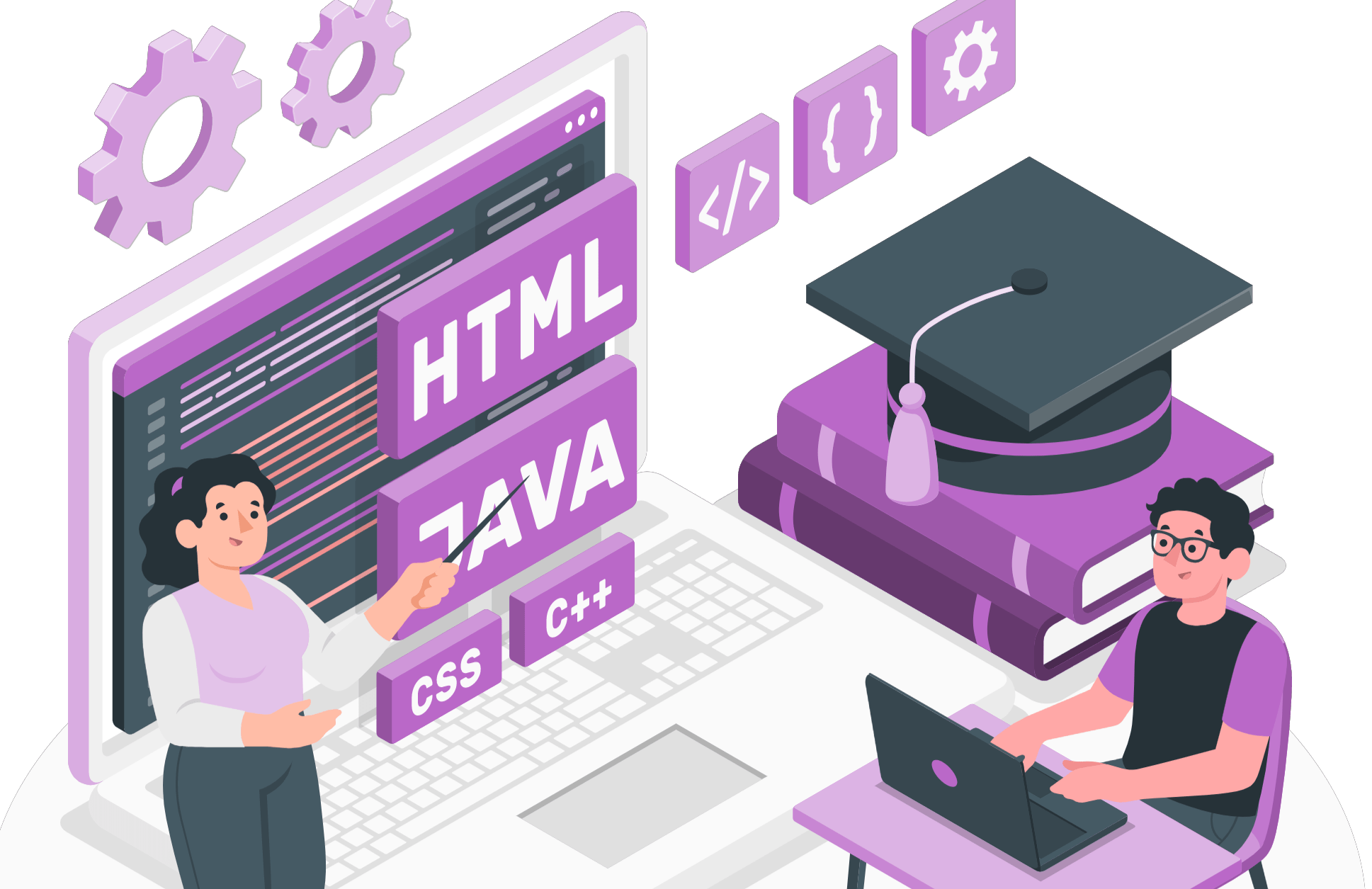60+ Interview Questions on C for Job Seekers in 2023
4 min read

What are some unique interview questions on C programming language?
You are on the right page if you are looking for answers to questions like the above one. We are here with some challenging interview questions on C language to help you analyze and hire the right candidate for your enterprise.
If you do not have a subject matter expert by your side, contact HyreSnap Interview as a Service Platform. It will execute the entire interview process with the help of 45+ subject matter experts and will give you a detailed report for every applicant.
Below you can see the measures you must take as an interviewer to execute the interview process and some technical questions that will help you analyse the candidate:
Preparing for interviews as an interviewer is just as important as preparing for an interview as a candidate. Here are some tips to help you prepare for interviews as an interviewer:
Review The Candidate's Resume and Application
Before the interview, review the candidate's resume and application thoroughly. It will help you understand their qualifications, experience, and skills and prepare relevant questions.
Create a Structured Interview Process
Creating a structured interview process can help you to ask consistent and relevant questions to each candidate, making it easier to compare and evaluate their responses.
Develop a List of Questions
Prepare a list of interview questions relevant to the job and the candidate's experience. You can also ask behavioural-based questions to understand how the candidate has handled certain situations.
Understand The Job Requirements
Ensure you understand the job's requirements and the skills needed to perform it successfully. It will help you evaluate the candidate's qualifications and suitability for the role.
Create a Welcoming Environment
Make sure the interview environment is welcoming and professional. Greet the candidates warmly, offer them water or tea, and ensure they are comfortable before starting the interview.
Take Notes
During the interview, take notes of the candidate's responses and any follow-up questions you may have. It will help you evaluate the candidate's strengths and weaknesses and make a more informed decision.
Follow up
After the interview, follow up with the candidate and let them know the next steps in the process. It can include providing feedback or setting up a second interview.
Overall, preparing for interviews as an interviewer requires planning, preparation, and attention to detail. By following these tips, you can conduct more effective and productive interviews and make informed hiring decisions.
60+ Interview Questions on C
We are listing some interview questions on C with their answers to help recruiters to come up with unique and challenging questions in the C programming language.
You can refer to these C programming questions and answers to prepare and execute the interview process for C programming in 2023:
What is the difference between procedural programming and object-oriented programming in C?
Answer: Procedural programming in C is a programming paradigm focusing on creating procedures or functions operating on data. In contrast, object-oriented programming is a programming paradigm that focuses on creating objects that encapsulate data and behaviour.
What is dynamic memory allocation in C?
Answer: Dynamic memory allocation in C is a technique that allows a program to allocate memory during runtime instead of static memory allocation, which occurs during compilation.
What is a linked list in C?
Answer: A linked list in C is a data structure consisting of a sequence of nodes, each containing a value and a pointer to the next node in the list.
What is a stack in C?
Answer: A stack in C is a data structure that follows the Last In First Out (LIFO) principle, where the last element added to the stack is the first element to be removed.
What is a queue in C?
Answer: A queue in C is a data structure that follows the First In First Out (FIFO) principle, where the first element added to the queue is the first element to be removed.
What is a binary tree in C?
Answer: A binary tree in C is a data structure that consists of nodes, where each node has at most two children, referred to as left and right children.
What is recursion in C?
Answer: Recursion in C is a technique where a function calls itself to solve a problem.
What is the difference between a single-dimensional array and a multi-dimensional array in C?
Answer: A single-dimensional array in C is a collection of variables of the same data type stored in contiguous memory locations. In contrast, a multidimensional array has more than one dimension.
What is a pointer to a function in C?
Answer: A pointer to a function in C is a variable that stores the memory address of a function.
What is a callback function in C?
Answer: A callback function in C is a function that is passed as an argument to another function and is executed when the other function completes its task.
What is a null pointer in C?
Answer: A null pointer in C is a pointer that does not point to any memory location.
What is the difference between stack memory and heap memory in C?
Answer: Stack memory in C is a region of memory used for local variables and function parameters, while heap memory is used for dynamic memory allocation.
What is a function pointer in C?
Answer: A function pointer in C is a pointer that points to a function.
What is a binary search algorithm in C?
Answer: A binary search algorithm in C is a search algorithm that uses a divide-and-conquer approach to search for a value in a sorted array.
What is the difference between bitshift and bitwise operators in C?
Answer: A bitshift operator in C shifts the bits of a value left or right, while a bitwise operator performs operations on the individual bits of a value.
What is a preprocessor in C?
Answer: A preprocessor in C is a program that processes a program before compilation and performs tasks such as text substitution and conditional compilation.
What is a function template in C?
Answer: A function template in C creates a generic function that can operate on different data types.
What is a virtual function in C?
Answer: A virtual function in C is a function that can be overridden by a derived class.
What is a smart pointer in C?
Answer: A smart pointer in C is a pointer that automatically manages the memory it points to and can prevent
How does the C preprocessor work, and what are some common use cases for it?
Answer: The C preprocessor is a tool that processes source code before it is compiled. It is commonly used to perform macro expansion, file inclusion, and conditional compilation tasks.
What is the difference between a function declaration and a function definition in C?
Answer: A function declaration in C is a statement that tells the compiler about the name, return type, and parameters of a function. On the other hand, a function definition provides the implementation of the function.
What is the purpose of the "volatile" keyword in C?
Answer: The "volatile" keyword in C tells the compiler that external sources may modify a variable and should not be optimised away.
What are some common memory-related errors in C programs, and how can they be avoided?
Answer: Common memory-related errors in C programs include buffer overflows, memory leaks, and dangling pointers. These can be avoided by carefully managing memory allocation and deallocation, using fixed-size data types, and checking for null pointers.
How does the C programming language handle floating-point arithmetic, and what are some common issues associated with it?
Answer: The C programming language uses the IEEE 754 standard for floating-point arithmetic. Common issues associated with floating-point arithmetic in C include rounding errors and unexpected behaviour when working with large or small values.
What is the difference between a structure and a union in C?
Answer: A structure in C is a collection of related variables of different data types. At the same time, a union is a special structure where all members share the same memory location.
How does C handle strings, and what are some common string manipulation functions in C?
Answer: In C, strings are represented as arrays of characters terminated by a null character. Common string manipulation functions in C include strcpy(), strlen(), and strcat().
What is a bit field in C, and how is it used?
Answer: A bit field in C is a way of packing data into a small number of bits, where each bit represents a single value or flag.
What is the purpose of the "const" keyword in C, and how is it used?
Answer: The "const" keyword in C is used to declare a variable as read-only, preventing its value from being modified.
What are some common data structures used in C programs, and what are their advantages and disadvantages?
Answer: Common data structures used in C programs include arrays, linked lists, stacks, queues, and trees. Each data structure has its own advantages and disadvantages regarding performance and memory usage.
What is the difference between C’s "++i" and "i++" operators?
Answer: The "++i" operator in C increments the value of a variable before it is used in an expression, while the "i++" operator increments the variable's value after it is used in an expression.
What is a function pointer array in C, and how is it used?
Answer: A function pointer array in C is an array of pointers to functions. It is commonly used to implement switch-like behaviour in a program.
What is a recursive function in C, and how is it used?
Answer: A recursive function in C is a function that calls itself. It is commonly used to solve problems that can be broken down into smaller subproblems.
What is the difference between a null pointer and a void pointer in C?
Answer: A null pointer in C is a pointer that points to nothing, while a void pointer is a pointer that can point to any type of data.
How would you implement a linked list in C?
Answer: A linked list in C can be implemented by defining a struct that contains a data element and a pointer to the next node. The last node in the list should have a NULL pointer.
How do you read input from a file in C?
Answer: Input can be read from a file in C using functions such as fopen, fgets, and fclose. The file must be opened in read mode using fopen, and input can be read line by line using fgets.
How would you implement a binary search algorithm in C?
Answer: A binary search algorithm in C can be implemented by dividing the array in half at each step and comparing the middle element to the search value. If the middle element exceeds the search value, the search continues in the left half of the array. If it is less, the search continues in the right half.
How would you reverse a string in C?
Answer: A string can be reversed in C by swapping the first and last characters, then moving inward until the entire string is reversed.
How would you implement a bubble sort algorithm in C?
Answer: A bubble sort algorithm in C can be implemented by repeatedly swapping adjacent elements that are out of order until the entire array is sorted.
How do you allocate memory dynamically in C?
Answer: Memory can be allocated dynamically in C using the malloc function, which reserves a block of memory of a specified size. The memory can be freed using the free function.
How would you implement a stack using an array in C?
Answer: A stack can be implemented using an array in C by defining an array and a variable to keep track of the top element. Elements can be pushed onto the stack by incrementing the top variable and assigning the value to the corresponding array index.
How would you implement a queue using a linked list in C?
Answer: A queue can be implemented using a linked list in C by defining a struct that contains a data element and a pointer to the next node. The front and rear of the queue can be represented by pointers to the first and last nodes, respectively.
How would you implement a binary tree in C?
Answer: A binary tree in C can be implemented by defining a struct that contains a data element and pointers to the left and right child nodes. Nodes can be inserted and searched by traversing the tree recursively.
How would you implement a merge sort algorithm in C?
Answer: A merge sort algorithm in C can be implemented by dividing the array in half, sorting each half recursively, and then merging the sorted halves.
How would you implement a hash table in C?
Answer: A hash table in C can be implemented by defining an array of linked lists, where each element in the array corresponds to a hash code generated from the data being stored. Elements can be inserted and searched by traversing the linked list at the appropriate array index.
How would you implement a binary search tree in C?
Answer: A binary search tree in C can be implemented by defining a struct that contains a data element and pointers to the left and right child nodes. Nodes can be inserted and searched by traversing the tree recursively and comparing the search value to the current node.
How would you implement a selection sort algorithm in C
Answer: A selection sort algorithm in C can be implemented by finding the minimum element in the array and swapping it with the first element, then repeating the process with the remaining unsorted elements.
Write a C program to find an array's largest and smallest elements.
Answer:
#include <stdio.h>
int main() {
int arr[] = {5, 3, 8, 2, 7};
int n = sizeof(arr)/sizeof(arr[0]);
int largest = arr[0];
int smallest = arr[0];
for(int i = 1; i < n; i++) {
if(arr[i] > largest)
largest = arr[i];
if(arr[i] < smallest)
smallest = arr[i];
}
printf("Largest: %d\n", largest);
printf("Smallest: %d\n", smallest);
return 0;
}
Write a C program to check if a string is a palindrome.
Answer:
#include <stdio.h>
#include <string.h>
int main() {
char str[100];
int i, j, flag = 1;
printf("Enter a string: ");
scanf("%s", str);
for(i = 0, j = strlen(str) - 1; i < j; i++, j--) {
if(str[i] != str[j]) {
flag = 0;
break;
}
}
if(flag)
printf("String is palindrome\n");
else
printf("String is not palindrome\n");
return 0;
}
Write a C program to calculate the factorial of a number using recursion.
Answer:
#include <stdio.h>
int factorial(int n) {
if(n == 0 || n == 1)
return 1;
else
return n * factorial(n - 1);
}
int main() {
int n;
printf("Enter a number: ");
scanf("%d", &n);
printf("Factorial: %d\n", factorial(n));
return 0;
}
Write a C program to sort an array of strings alphabetically.
Answer:
#include <stdio.h>
#include <string.h>
void sortStrings(char arr[][50], int n) {
char temp[50];
for(int i = 0; i < n - 1; i++) {
for(int j = i + 1; j < n; j++) {
if(strcmp(arr[i], arr[j]) > 0) {
strcpy(temp, arr[i]);
strcpy(arr[i], arr[j]);
strcpy(arr[j], temp);
}
}
}
}
int main() {
char arr[][50] = {"apple", "banana", "orange", "grape"};
int n = sizeof(arr)/sizeof(arr[0]);
sortStrings(arr, n);
for(int i = 0; i < n; i++) {
printf("%s ", arr[i]);
}
return 0;
}
What is the difference between pass-by-value and pass-by-reference in C?
Answer: Pass-by-value means that a copy of the argument is passed to the function, while pass-by-reference means that the memory address of the argument is passed to the function. In C, pass-by-reference is achieved using pointers.
How do you implement a hash table in C?
Answer: A hash table can be implemented by using an array of linked lists, where each list contains the key-value pairs that map to the same hash value. The hash function should be designed to minimise collisions.
What is a virtual function in C?
Answer: C does not have virtual functions like C++, but they can be emulated using function pointers and structs that mimic class hierarchies.
How do you implement a binary tree in C?
Answer: A binary tree can be implemented by defining a struct containing a data field and pointers to the left and right child nodes, then using dynamic memory allocation to create and link nodes together.
What is a function object in C?
Answer: C does not have function objects like C++, but they can be emulated using function pointers and structs containing data fields to store the object's state.
How do you implement a depth-first search algorithm in C?
Answer: A depth-first search algorithm can be implemented recursively by visiting the current node, visiting each of its unvisited neighbours in depth-first order, and marking the node as visited.
What is the difference between a macro and a function in C?
Answer: A macro is a preprocessor directive replaced by the corresponding code before compilation, while a function is a block of code executed at runtime.
How do you implement a topological sort algorithm in C?
Answer: A topological sort algorithm can be implemented by repeatedly removing a node with zero in-degree (i.e., no incoming edges) and its outgoing edges from the graph until all nodes are visited.
What is a lambda function in C?
Answer: C does not have lambda functions like C++, but they can be emulated using function pointers and structs that contain data fields to store the captured variables.
How do you implement a breadth-first search algorithm in C?
Answer: A breadth-first search algorithm can be implemented using a queue data structure to visit each node and its neighbours in breadth-first order.
What is a virtual table in C?
Answer: C does not have virtual tables like C++, but they can be emulated using arrays of function pointers indexed by the object type.
How do you implement a heap data structure in C?
Answer: A heap data structure can be implemented using an array of elements that satisfy the heap property (i.e., the parent is greater than or equal to its children) and using the array indices to navigate the tree structure.
What is the difference between recursive and iterative functions in C?
Answer: A recursive function calls itself until a base case is reached, while an iterative function uses loops to repeat a block of code until a condition is met.
How do you implement a binary search tree in C?
Answer: A binary search tree can be implemented by defining a struct that contains a data field and pointers to the left and right child nodes and then using dynamic memory allocation to create and link nodes together according to the binary search tree property (i.e., the left subtree contains values less than the root and the right subtree contains values greater than the root).
Implement a function to check if a binary tree is a binary search tree.
Answer:
int is_bst_helper(Node* node, int min_value, int max_value) {
if (node == NULL) {
return 1;
}
if (node->data < min_value || node->data > max_value) {
return 0;
}
return is_bst_helper(node->left, min_value, node->data - 1)
&& is_bst_helper(node->right, node->data + 1, max_value);
}
int is_bst(Node* root) {
return is_bst_helper(root, INT_MIN, INT_MAX);
}
Implement a function to find the longest common prefix of an array of strings.
Answer:
char* longest_common_prefix(char** strs, int strsSize) {
if (strsSize == 0) {
return "";
}
char* prefix = strs[0];
for (int i = 1; i < strsSize; i++) {
int j = 0;
while (prefix[j] && strs[i][j] && prefix[j] == strs[i][j]) {
j++;
}
prefix[j] = '\0';
}
return prefix;
}
Implement a function to check if a linked list contains a cycle.
Answer:
int has_cycle(ListNode* head) {
ListNode* slow = head;
ListNode* fast = head;
while (fast != NULL && fast->next != NULL) {
slow = slow->next;
fast = fast->next->next;
if (slow == fast) {
return 1;
}
}
return 0;
}
68. Implement a function to find the maximum sum of a subarray in an array of integers.
Answer:
int max_subarray_sum(int* nums, int numsSize) {
int max_sum = INT_MIN;
int current_sum = 0;
for (int i = 0; i < numsSize; i++) {
current_sum = current_sum + nums[i];
if (current_sum > max_sum) {
max_sum = current_sum;
}
if (current_sum < 0) {
current_sum = 0;
}
}
return max_sum;
}
Executing interviews and hiring the best talent is quite difficult in India, as you have thousands of options. Apart from this, you must also have a subject matter expert by your side to hire a skilled and deserving candidate in 2023.
Hence, we recommend consulting your hiring challenges with HyreSnap Interview as a Service platform. It will execute all the interviews and give you a detailed report for every candidate.
Bottom Line
A wrong hiring in your company will make you experience long-term losses. Hence, hiring a suitable candidate is very important for every business.
This is where HyreSnap takes place with its 450+ subject matter experts and AI tools. For additional details regarding Interview as a Service, you can reach us at contact@hyresnap.com.




